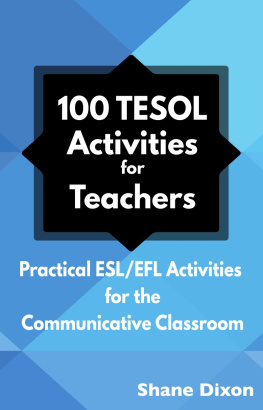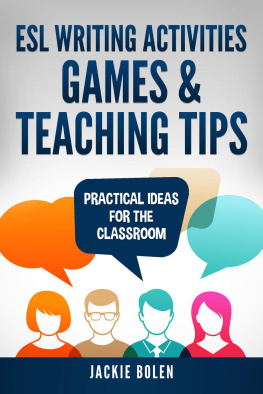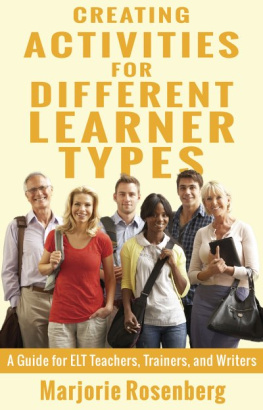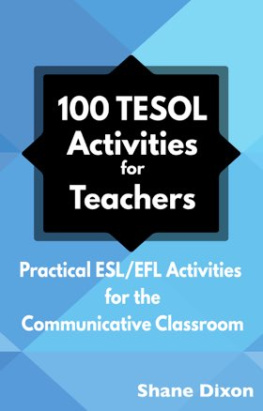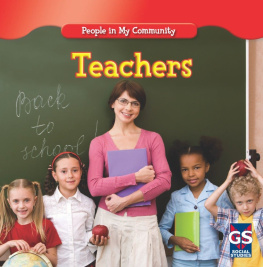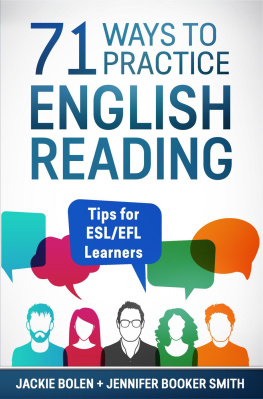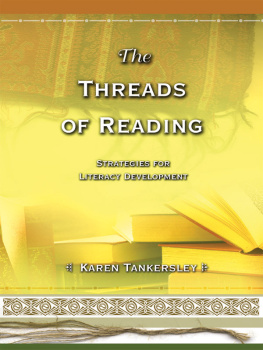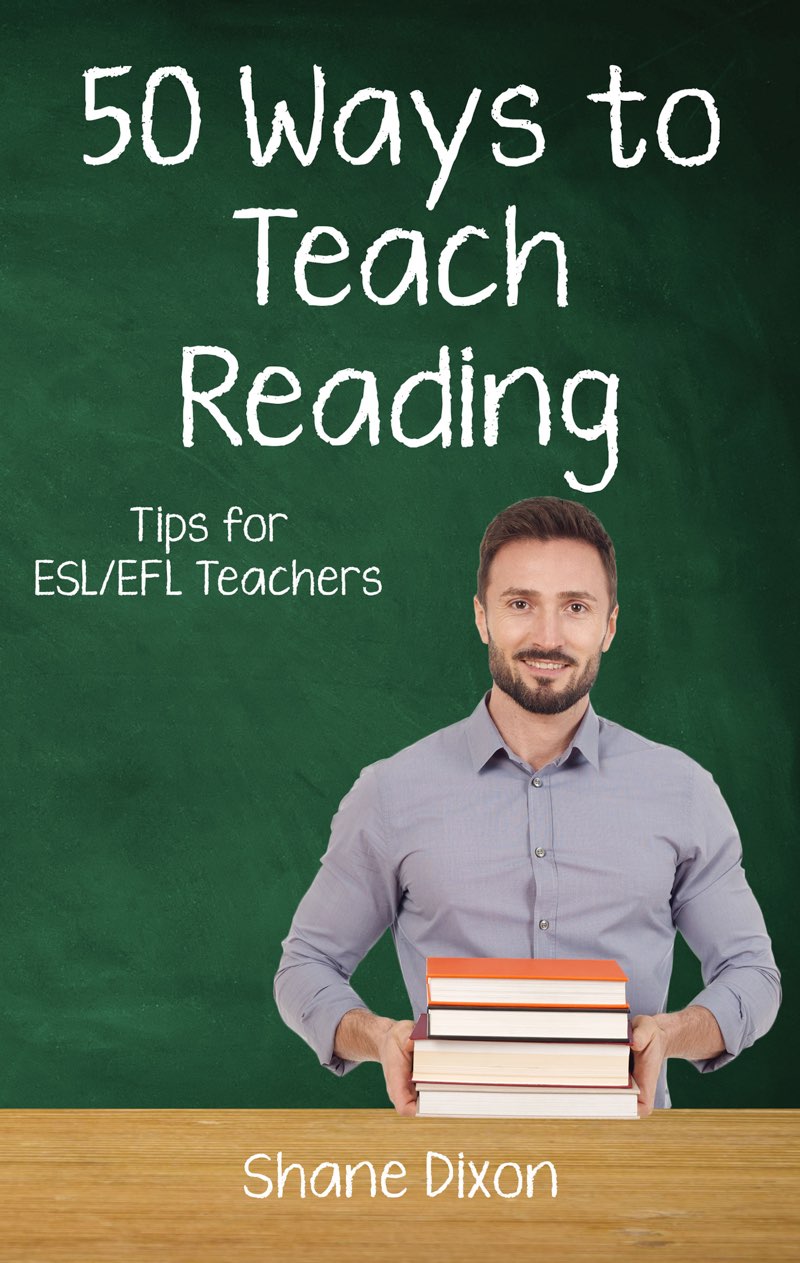How to Use This Book
The activities in this book are organized into these categories:
- pre-reading
- reading
- post-reading
- intensive
- extensive
Pre-reading activities focus on preparing and intriguing learners by providing material that helps them gain insights and context about what they will read.
Reading activities occur during a reading, and invite learners to find material that will help them comprehend the text more readily. Some of these reading activities must be given ahead of time so that learners can read and work on their own, but other reading activities involve stopping midway during a reading, either with the teacher or with a group or partner.
Post-reading activities give learners a chance to demonstrate their comprehension of the reading, and often serve as evaluative or critical thinking instruments to see what students know and feel about a reading.
Intensive reading is a detailed, top-down approach to reading with specific language tasks.
In contrast, extensive reading involves reading texts for enjoyment, often autonomously, to develop general reading skills. Whereas intensive readings are often chosen by teachers, extensive readings are often chosen by learners. Intensive reading has a specific learner strategy or goal in mind, and the goal of extensive reading is to encourage learners to get lost in the experience of reading.
As you read the following activities, keep in mind these suggestions:
- Read all fifty tips and become familiar with each of them.
- For a balanced approach, use a different focus (language, meaning, or literary) from your last reading, or consider multiple activities for one reading (at least one language, meaning, and literary focus for each reading).
Introduction
This book is for teachers both new and experienced to the world of Teaching English to Speakers of Other Languages (TESOL). The activities here are deliberately both simple and common. This provides two distinct advantages. First, you can modify these activities to suit your own needs and context. Second, this small book can remind you of activities you once used and loved, but may have forgotten.
As you choose an activity in this book, consider first the purpose of the reading. As is always the case in instruction, purpose should drive selection. If you have more than one purpose, consider your primary focus.
For example, for some teachers, the primary purpose for a reading is to introduce learners to vocabulary, sentence structure, parts of speech, and even pronunciation. These teachers have a language focus. In contrast, others see readings as an opportunity to have a meaning focus, helping learners to discuss main ideas, share opinions, and engage in critical thinking. Still other teachers might have a literary focus, where they invite learners to identify character, plot, setting, metaphor, and other literary devices.
We believe that many of the activities presented here can, with a little teacher creativity, be modified not only to suit the above concepts but your own focus as well.
Where to Find Reading Materials
Colleagues. Look to high-energy teachers who inspire you and ask them to share the readings that they have used with great success.
- Textbooks. Textbooks often are organized according to high interest themes and are leveled according to the language proficiency of your learners.
- Students. Dont forget to include your students in your quest to find great reading material. You may find that students are naturally finding materials that engage and motivate them.
- Your own experience. Dont forget the general truth that what you find interesting and fascinating is simply easier to teach. If you are inspired by the reading, it is more likely that your enthusiasm will rub off.
- Language approach. Consider what language you want your learners to be able to use. For example, if you want learners to understand the passive voice, you might select a reading about history that talks about when a city was built or how it was developed.
- Reading approach. You may wish to do the opposite of a language approach. In other words, find a reading that you find intriguing and then look for language that, at your students level, might be worthwhile to teach.
Pre-reading activities help learners by reducing the cognitive load (or reading difficulty) or the passages they are given, and are, as the name suggests, to students before any reading is done.
Pre-reading activities are essential to learners in several ways. First, pre-reading skills allow students to activate their previous knowledge of the subject matter. In other words, if students are going to read about the Australian outback, pre-reading strategies often allow students to discuss and share what they already know and understand about the outback.
Furthermore, pre-reading activities allow students to build information that will assist in the reading process, giving needed vocabulary and cultural context to assist in the reading process.
Finally, pre-reading activities are a great boon to motivation, providing learners with opportunities to imagine, predict, and conceptualize what they are about to read. Good pre-reading activities, in short, make learners want to read the material that is about to be presented, and can be a tool to help learners visualize and think critically.
This term describes a variety of language activities with one common feature: one person or group of people has information that others do not have. The point of an information gap activity is to have people interact with each other to find all the missing information.
For example, one student might have a map with all of the rivers labeled with all the mountains are unlabeled. Another student has a map that is precisely the reverse, with all of the mountains labeled but not the rivers. Students with the river map are not allowed to look at the mountain map, and students with the mountain map are not allowed to look at the river map. Instructions are given that students are not allowed to look at each others map. Thus, students must complete their maps with both rivers and mountains by talking with each other and asking questions.
While information gap activities can be used in a variety of ways, as a pre-reading activity, they can help to stimulate conversation and help students gain immediate access to themes and vocabulary useful to a reading. In the example above about maps, for example, an information gap about a particular location that has rivers and mountains might prompt students to remember or learn key vocabulary that the reading presents.
Sentence starters give students a chance to practice vocabulary and grammatical structures. Sentence starters are prompts that invite students to finish a sentence; for example,


